In 2025, Abaucin, a new precision antibiotic, was developed using AI technology. AI Abaucin takes down the deadly superbug Acinetobacter baumannii single-handedly. This counters antibiotic resistance more efficiently, facilitates focused medication development, and lessens organ damage. With world specialists supporting the move and the potential of Abaucin to transform medical treatments, the new antibiotic showcases how modern technology can address the increasing global superbug threat.
Why this breakthrough matters in 2025
Think of getting to the hospital with a small infection, only to realize that you cannot be assisted with any medication. That is the morbid reality in which antibiotic resistance has been driving us. There was then a new dawn in 2025. Scientists have made a breakthrough and managed to utilize artificial intelligence to help Western University researchers discover a novel antibiotic that can kill one of the world’s most dangerous superbugs. It is not any other medical breakthrough, but it is the game changer.
The research on antibiotics has slowed tremendously, and the bacterial resistance has increased exponentially in the last few decades. The conventional approaches to conducting pharmaceutical research usually encounter delays, are expensive, and time-consuming. AI has, however, transformed the process by enabling researchers to screen thousands of chemical compounds in hours, instead of years.
The year 2025 does not only mean a milestone, but scientifically, it is also a groundbreaking point of change in the rate of combating infectious diseases. This is the first instance in history when artificial intelligence has been shown to identify a working antibiotic to a critical threat pathogen. The implications? Quicker discovery of drugs, personalized medications, and even an end to the impending post-antibiotic age.
The silent global health crisis: Antibiotic resistance
The concern of antibiotic resistance is an issue that has long been overlooked, but it is steadily becoming one of the most dangerous threats to humanity’s well-being. The World Health Organization (WHO) stated that infections from antibiotic resistance in one and a half million people globally every year. The numbers are perhaps underestimated, bearing in mind that there is no worldwide surveillance and diagnosis.
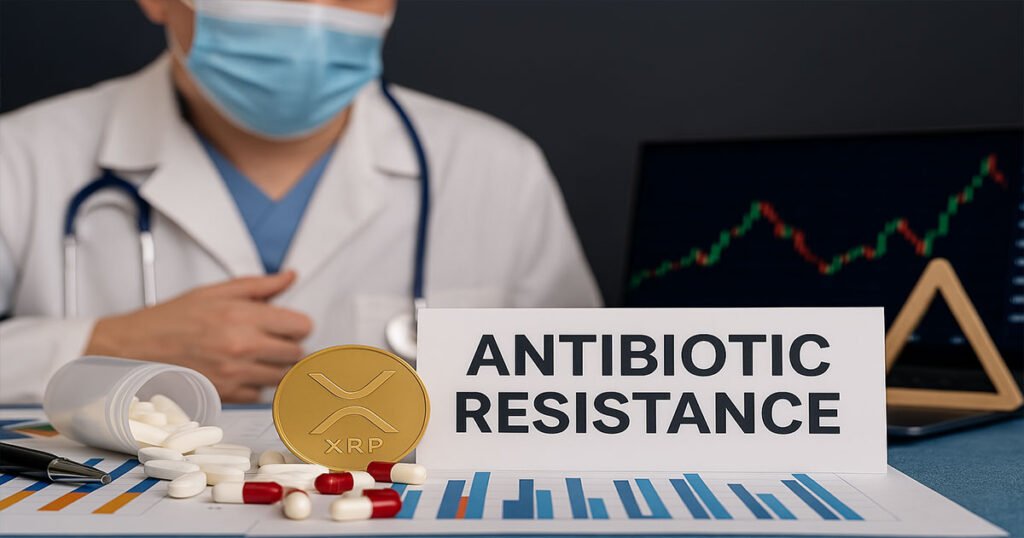
Superbugs, also known as Bacteria that are not sensitive to several drugs, have emerged to be a source of urgency concerning new antibiotics. However, pharmaceutical companies have hindered the development of antibiotics, thus creating a risky gap caused by low profitability. That is where AI kicks in. AI is a promising way to help with this growing crisis by speeding up the research process and minimizing the cost.
With bacteria looking down upon the existing antibiotics, and hospitals all over the world struggling to cope with this situation, the prospect of AI in drug discovery becomes the light at the end of the tunnel. Not the issue of innovation; it’s a matter of survival.
What Are Superbugs and Why Are They Dangerous?
Definition and dangers of superbugs
Superbugs are germs that no longer react to various antibiotics and are extraordinarily hard, not impossible, to treat. These minuscule threats are ready fast, and better still, to our best medications, with horrific efficacy. They are not an issue of tomorrow; they already exist, they lurk around hospitals, other neighborhoods, and even our dinner table.
Such a capacity to thrive in sterile environments is one of the reasons why superbugs are so threatening. Once they attack a patient, it becomes a complex treatment that takes a long time in most cases. In most instances, the physicians are left to resort to end-of-the-road antibiotics, which are both very toxic and ineffective.
These are bacteria that flourish in environments in which medications are overused or abused; that is, in overcrowded hospitals, in poorly policed drug markets, and on farms where livestock are dosed with prophylactic antibiotics. Making unnecessary use of antibiotics provides bacteria with a chance to grow and become resistant to them.
Real-world impact and mortality stats
The statistics do not lie. The CDC has reported that there are over 2.8 million antibiotic-resistant infections annually in the United States alone, with a resultant mortality of over 35,000. That takes over one million people in the whole world per year, a figure that is mind-blowing and explains why the problem needs to be tackled.
Battlegrounds are emergent in hospitals. Even common surgeries such as those undertaken by patients, chemotherapy, or the birth of a child are endangering patients more. Besides, infections resistant to antibiotics are known to be highly contagious and elusive. They are not only harmful to the person being ill, but they also endanger the whole system of care because they extend the hospital stay and the cost of treatments.
Nations all over the world are in a race against time to control these menaces, and resources are limited as well as progress is being made very slowly. Those are the reasons why the AI-powered discoveries, such as the finding of Abaucin, are catching attention. They represent the type of advancement that we desperately have been in demand of something more intelligent, quicker, and more of an outmaneuver to bacteria before it becomes too late.
The Role of AI in Drug Discovery
How AI identifies antibiotic compounds
Artificial Intelligence is no longer an ability of both self-driving cars and chatbots only; it transforms the very process of creating life-saving mechanisms. By 2025, AI models will be fed with large databases of chemical compounds and expected to determine which of them could be effective communicating agents. The model applied in this breakthrough has examined more than 6,000 chemical compounds and identified the promising candidates within a little more than two hours.
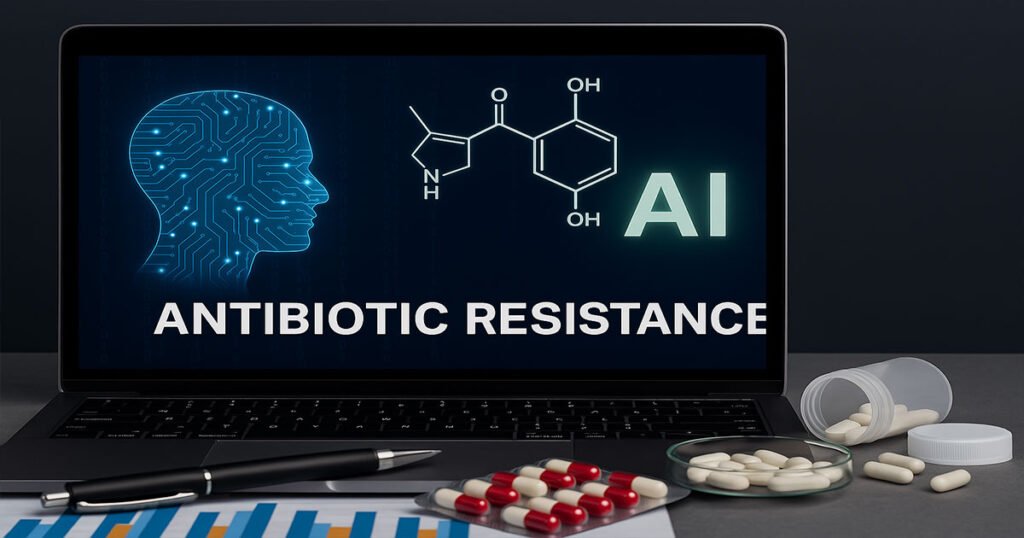
Such a method significantly reduces the time and cost usually required to discover a drug. Scientists do not need to run tests on thousands of chemicals in a lab; instead, they allow the AI to work. After the AI reduces the number, scientists will be able to experiment with the most worthy candidates in practice.
This is not necessarily a speed matter; this is an attitude of precision. AI can identify and recognize the patterns and interactions that even the most acute human minds would overlook down to the molecular level. It also eliminates compounds that are not effective or toxic at an early stage of the process, and only the best prospects are advanced to the next stage.
Why AI is faster and more accurate than traditional methods
The originality of drug discoveries is similar to a needle in a haystack, whilst having your eyes closed. AI makes you wake up and provides you with a magnet. Scholarly traditional modes of research involve months of trial and error, and even after that, it is not always so successful. In AI, scientists feed the AI with the knowledge they already have, effective antibiotics, chemical structures, and resistance information, and then the machine learns what to do and what not to do.
It is a collaboration. The experience and context are given by the scientists; the pattern recognition and processing ability are given by the AI. The two things that humans would only discover after years.
This new-fangled dispensation is already revealing its potential in AI. Similar AI platforms are also being tested as treatments against cancer, vaccines, and even neurological conditions. However, the development of a functional antibiotic, something that people sought after exhaustively for decades, is such a breakthrough that disapproves of AI being used in medicine. It is the present.
Meet Abaucin: The New Antibiotic
How it was discovered
Abaucin is not a product of a petri dish. It originated with an algorithm. Scientists at McMaster University and MIT trained an artificial intelligence model on thousands of chemicals and their known impacts on bacteria. After training, the model then scanned through a huge collection of more than 6,000 compounds of which their identities were not known.
The AI, in less than two hours, had found Abaucin as a top choice. After flagging the broadcast, the scientists tested the compound in a lab and found out that it can kill Acinetobacter baumannii, one of the deadliest superbugs in the world.
What makes it even more interesting is the precision with which Abaucin is pursued. Though the majority of antibiotics destroy a variety of bacteria, Abaucin is very specific and targets one species only. Such a selective treatment has a lower risk of destroying good bacteria in your body, and it becomes difficult to develop resistance.
What makes Abaucin different
Abaucin is not typical of most antibiotics. It is not a blank check; it is a shotgun. It is particular to A. baumannii, which is a resistant pathogen that is sometimes considered to be untreatable. Conventional antibiotics are like broad-based nets that are likely to interfere with digestive flora and cause sidelines. Abaucin is a surgical kind of person.
Such particularity might alter our approach to infections. New antibiotics in the future would be designed to target a specific bacteria rather than blanket treatments to minimize cases of resistance and side effects.
The way it was discovered is also highlighted as another feature. AI would not have found Abaucin without a human. It comes down to a pattern recognition and computer learning result, and evidence that artificial intelligence can see when we can not.
Targeting Acinetobacter baumannii: A Lethal Foe
Why this superbug is a major threat
There is one bacterium you do not want to encounter inside a hospital room, and that is the Acinetobacter baumannii. The World Health Organization ranks this microscopic monster as one of the critical threats of antibiotic-resistant pathogens. It has made its fame due to the extreme difficulty of killing it, often resulting in infections of wounds, lungs, and the bloodstream, particularly in ICU or those with immunologically compromised individuals.
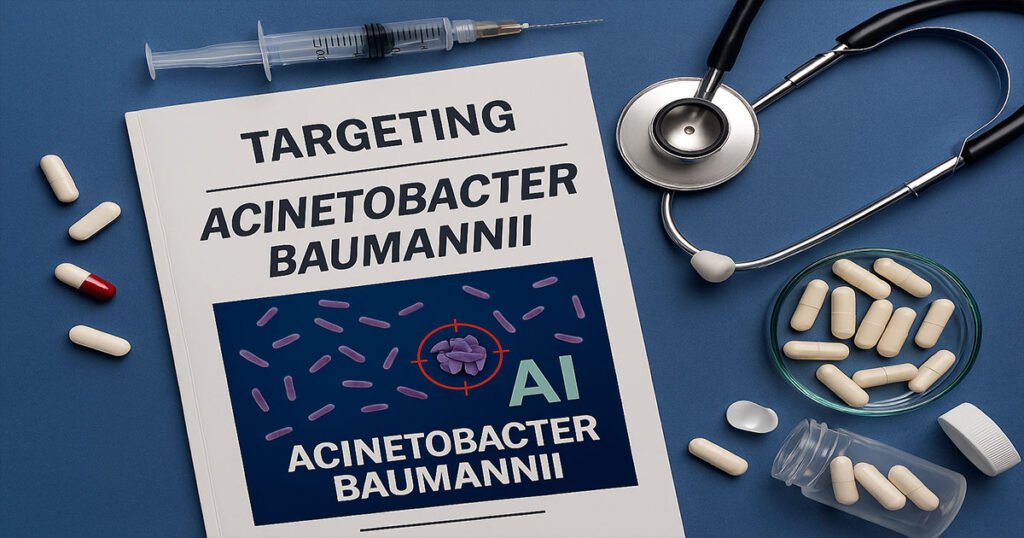
Compared to most of the other bacteria, A. baumannii can survive bizarrely on dry surfaces, hospital equipment, and the hands of healthcare professionals. It does not discriminate when it comes to its habitat or the victim that it infects. When it gets inside the body, it can quickly develop resistance to almost all the antibiotics the doctors can inject against it. Worst of all, it is also adept at creating biofilms that act as a protective film around bacteria and make it even more challenging to kill.
In the U.S. alone, it is estimated that thousands of hospital-acquired Acinetobacter infections result in death annually. In the world, it has cost victims months in the hospital, the overcharging of medical bills, and the loss of thousands of lives. The time when a solution has been needed is never higher now, with drug-refractory strains becoming a common occurrence in most portions of the globe.
That is why the finding of Abaucin is such a breakthrough. It aims at the same bacteria that have been turning out to be the nightmare of modern medicine. Focusing on the A. baumannii, Abaucin hints at the development of a new type of weapon, not only launching more antibiotics into the battle but doing it with a scalpel.
How Abaucin neutralizes it
Abaucin is very specific, unlike conventional antibiotics, which have a wide and sometimes even haphazard action. During the initial test phase, it not only made A. baumannii weak, but it destroyed it. In mice infected wounds, the drug was tested, and scientists found that Abaucin was effective in curbing the infection, and at the same time, it did not damage the nearby cells or the helpful bacteria.
The molecular action of Abaucin is still the object of study, but initial readings display that it targets a new pathway of metabolites unique to A. baumannii. That is why this selective action turns it into such a breakthrough. Abaucin gets around the typical trap of antibiotic resistance, overuse resulting in adaptation of bacteria, by targeting a very specific bacteria’s non-essential functionality.
Furthermore, the drug does not kill other bacteria; thus, it does not put pressure on microbial systems, which usually causes resistance. Such a targeted approach may be an indication of a new course of antibiotics treatment as we approach it with a drug designed against one specific pathogen rather than broad groups of pathogens, as is being increasingly done with cancer.
Had these outcomes been duplicated in humans, then we might be seeing a paradigm shift in the future treatment of bacterial infections.
How AI-Discovered Antibiotics Could Change Medicine
Precision medicine for infections
Medicine of the future is accurate, individual, and data-driven. The findings of the Abaucin are only preliminary! With more learning and development, the AI can assist the scientists in the creation of antibiotics, not only specific to the condition-causing bacteria but also to the patient and the genetic makeup, as well as a microbiome profile.
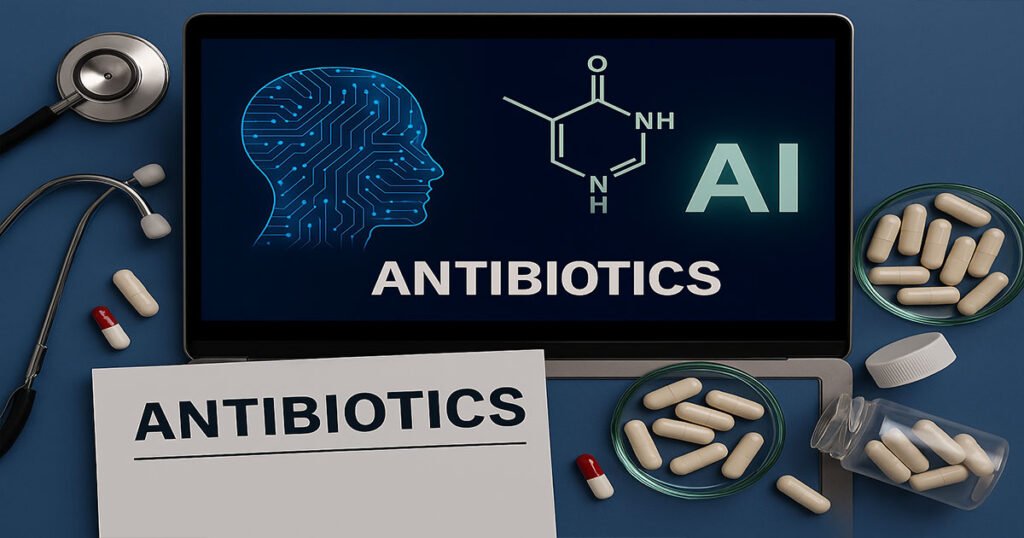
Such precision has possibilities of doctors being able to carry out a test, determine the exact pathogen causing any infection, and prescribe a specifically designed antibiotic that would not only attack the pathogen, but would be harmless and least disruptive to the rest of the body. This is a whole lot different than the trial-and-error method that prevails today, where patients are usually administered broad-spectrum antibiotics with an attached air of precaution.
Smart combinations of drugs are also possible with AI. Instead of using only one compound, they can compare the effect of different drugs on bacteria and on others to discover synergies that will not be found by people. This sets the stage for combination therapies that are more powerful and are more difficult to overcome by the bacteria.
Similarly to how individual treatments of cancers have changed the field of oncology, AI-powered antibiotics may alter the landscape of treatment of infectious diseases and help shift the paradigm to highly personalized, smart antibiotic therapy.
Reduced side effects and less resistance
One of the largest problems with the existing antibiotics lies in their side effects. Not only bad bacteria, but also good, die through broad-spectrum drugs, which causes unwanted manifestations such as the imbalance of the gut, the secondary infection, and antibiotic-associated diarrhoea. Resting the collateral damage and enabling the body to heal quicker by applying more precise antibiotics such as Abaucin.
What is more crucial is that using this strategy significantly reduces the risk of antibiotic resistance. The fewer bacteria are subjected to a course of antibiotics needlessly, the less evolutionary pressure bacteria have to spread and develop. This will imply that the drugs we develop will be more effective and longer-lasting.
It also uses AI to determine compounds that exhibit lower toxicity against human cells, and this translates to reduced side effects for the patients. Having the capability to model a chemical reaction and how the new chemistry will express itself biologically in advance, scientists will have an opportunity to eliminate toxic candidates early on during the development process.
In other words, it is not correct to state that AI is helping us come up with new drugs; it is also helping us come up with better drugs. Smart and safer more sustainable treatment has become available.
From Lab to Pharmacy: What’s Next for Abaucin?
Clinical trial phases explained.
Although the lab results are promising, it is not the end of the road yet as far as Abaucin is concerned. It must pass through a clinical trial procedure before being administered. As a rule, this passage takes several years and consists of four stages:
- Preclinical Testing: It entails an extra phase of laboratory tests and animal experimentation to identify safety and dose. Abaucin has already been seen to be promising in mice, and more data are needed before initiating a clinical study in humans.
- Phase 1: During the first stage, the drug is used on a small group of healthy persons to establish drug safety, the level of dosage, and any side effects as portrayed.
- Phase 2: In this stage, the drug will be given to a small population, which is the patients who are already infected. Scientists test its efficacy as well as its side effects.
- Phase 3: This is in bigger studies in multiple centers, which involve hundreds of patients or even more. This is meant to verify effectiveness, monitor side effects, and compare to the current treatment.
- FDA Approval: The data is approved by the FDA in case it appears to be good, and the manufacturer can request the same approval process. Then FDA or a similar body determines whether the drug is safe and effective enough to be used by the population.
This can be a 5-7-year procedure even with an accelerated procedure. But the sense of urgency that antibiotic resistance lends to the situation could shorten this schedule in the case of Abaucin.
Estimated timeline for public use
When will Abaucin be available in your neighborhood drug store? All things going well, researchers think it might be ready for the market by 2030. It could take a long time; however, in the context of drug development, it is lightning speed.
Meanwhile, the scientists will never rest until they perfect the compound, to see how much it can do and to make it safe for all, including the aged in residential facilities and even children who have just come out of surgery.
The discovery of Abaucin is a matter of the beginning. The following stages, clinical validation, regulatory approval, and mass production, are important. However, there is no doubt: the process has started, and it is worth observing.
Expert Reactions and Endorsements
Scientists weigh in on the discovery.
The scientific fraternity has not been an exception in showing its zeal towards the discovery of Abaucin. It is believed by many experts not only a victory in the fight against the drug-resistant bacteria but also legitimization of the AI role in medicine. As explained by Jonathan Stokes, a prime researcher at McMaster University, the cases of Acinetobacter baumannii were termed as the public enemy number one, and it is extremely uncommon indeed to find an antibiotic that can help address such a stubborn pathogen.
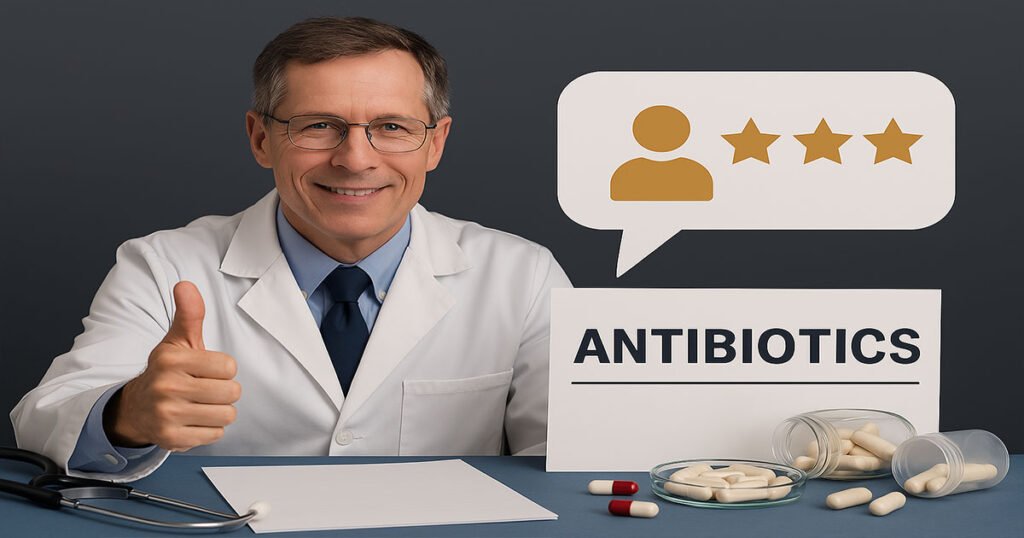
Professor James Collins, a top NAS collective-member synthetic biologist at MIT, shared his enthusiasm. This discovery, according to Collins, who has a longstanding interest in the potential of machine learning to apply to the field of pharmaceutical research, was more than a testament to the ability of AI to go a long way in helping us find new antibiotics.
The fact that it is cross-border is especially promising. The researchers in both the U.S. and Canada helped this accomplishment to highlight the possibility of worldwide collaboration and advanced technology to build actual medical solutions. The collaboration between AI developers and microbiologists also showed the importance of interdisciplinary work when approaching current medical issues.
Such a consensus among the world experts not only indulges in a celebration of the present. It is about creating a world in which AI will be involved in the drug development process even more so that it will enable humanity to be one step ahead of microbial challenges.
Quotes from global health leaders
This is what other big names in international health had to say:
- The former Chief Medical Officer for England, and UK envoy on antimicrobial resistance, Prof Dame Sally Davies, said:
- We have a whoopee! It is a giant changer of the game. I am excited about the work he [Dr. Stokes] is putting it in place, it will save lives.”
- As Dr. Soumya Swaminathan, former Chief Scientist at the World Health Organization, indicated:
- Artificial intelligence has always been over-promising in healthcare. Findings such as Abaucin indicate that it is already beginning to live up to its promise.”
- In a symposium, Dr. Anthony Fauci, who used to direct NIAID, stated:
- It may turn out to be one of the greatest medical breakthroughs of the decade. When it comes to replication of these AI-driven practices, we have a new era of infection control on our hands.
When some of the most respected health professionals in the world are this rested, it is a definite pointer that the field is listening. Such an endorsement has the added advantage of increasing the confidence of the people, and it lays the base to increased, speedy financing, regulatory, and broad international investment.
Challenges Ahead for AI Antibiotics
Regulatory barriers and public trust
All the hype notwithstanding, AI-powered antibiotics such as Abaucin have a long way to go. The regulatory barriers are the first. Although the current systems of drug approval are already quite complex, the involvement of AI makes the task even more complicated. Regulators no longer simply have to approve a drug but an algorithm facilitating its discovery, as well.
- How correct is it? Can it be repeated?
- In any sense, was it biased?
It is terra incognita to such institutions as the FDA and the EMA. Regulations on how to assess the machine-generated information have yet to be fully established, and that may delay the approval process even for drugs that are needed on an urgent basis.
Public perception is another great obstacle. AI continues to make many people shudder. The concept of a machine that plans the drug you are injecting into yourself is creepy. The openness about how the drug has been found and its working mechanism will be important in drawing the attention of the people. Humanizing communications on the process by scientists and regulators will also stem some fears that they are doing something mysterious.
Chances of overhyping exist, too. Breakthroughs in AI are regularly portrayed in the media as a miraculous one-time event, but emotion-driven drug discovery is a long, costly, and uncertain process. In case people anticipate Abaucin to be available on shelves next month and it still takes 5 years, they will feel disappointed and this might result in an incorrect impression not only of this drug, but to the whole field.
The cost of innovation in medicine
It is one of the bitter ironies in the medical world when the innovations usually carry a heavy price. Creation of an entirely new antibiotic is already costly. The inclusion of AI, complicated validation procedures, and precise trials only increases the expenditure. The result? An antibiotic that is also a lifesaver, but too expensive to be applied at a mass scale, and more frequently used, resistant infections occur in developing countries.
Biotechnology firms will no doubt have to balance and trade off between novelty and affordability. Fortunately, the global health agencies are putting more pressure on getting the necessary medication at a reasonable price. Abaucin will not only rely on its value as science but the clever policy, good pricing, and fair distribution.
Joint investment opportunities, such as governmental, nonprofit, and commercial businesses, may provide the solution. By making antibiotic resistance an international emergency (like COVID-19, we can be too sure that any treatment will not become a luxury lifesaving product of a few but a readily dispensed medicine to all.
The Future of AI in Medical Research
Other potential applications
So, what else can AI do when it takes a few hours to locate a new antibiotic? The options are enormous. Researchers have already started to utilize AI to:

- Tailor cancer therapies on a tumor-by-tumor basis.
- Hint: how viruses are mutating, to assist in creating a vaccine.
- Discover drugs for neurodegenerative illness, such as Alzheimer’s.
- Become able to simulate protein folding and crack the structure of complex molecules.
Among the greatest benefits of AI is an excellent capacity to process and analyze vast interconnected datasets, which human researchers cannot do effectively. AI may seek to discern patterns in genetic code, outbreaks of diseases, and reactions to treatment to provide us with this insight that we never had.
Pharmaceutical firms have started to organize their R&D departments with AI in mind. Pure-play AI drug discovery startups have secured billions of dollars of funding. Colleges are opening up programs that bring together all the disciplines of biology, chemistry, and computer science.
This is not a temporary fashion. This is a permanent change in approaching medical research, and at least in terms of Abaucin, we are only at the beginning.
How AI is shaping pharmaceutical R&D
Random trials and errors are no longer welcome. AI is turning R&D smarter, faster, and more focused. Companies no longer have to spend years and millions of dollars in order to develop one type of drug, as now they are able to test thousands of virtual compounds within weeks.
Moreover, AI models are able to simulate drug behavior across body types, besides genetic backgrounds and environmental conditions, thus time-saving and do not require testing on animals in the recent stages of development. This simplifies development, and the channel between discovery and delivery becomes much more efficient.
Even such pharmaceutical giants as Pfizer, Roche, or Novartis are already introducing AI frameworks into their research processes. The coming generation of medical innovations is going to owe not only to test tubes and microscopes, but also to neural networks and machine learning algorithms.
In this case, artificial intelligence is bringing us to the dawn of intelligent drug design. And, by the example of Abaucin at least, the outcome may be life-changing.
Why This Matters to You
Everyday implications of antibiotic resistance
The condition of antibiotic resistance can be called somewhere like an issue for scientists and doctors, but it is a problem everywhere. You can become a victim of drug-resistant infection regardless of whether you are an adult, a child, or an older adult. A small incision, a dental procedure, or a post-surgical infection that follows the surgery may turn fatal in case the antibiotics that we use become ineffective.
We are used to seeing the infections as a trivial burden. Get sick, take a pill, and feel good. However, this convenience is passing away. Bacteria have a way of outwitting our medications; thus, simple conditions might become life-threatening. There are also some superbugs that have grown resistant to all current antibiotics that leaving doctors powerless.
Now imagine a world where, due to the risk of infection, organ transplants are too dangerous, C-sections are too risky, or chemotherapy is not an option. And that is where we are all going unless we innovate and quickly at that. Findings, such as that of Abaucin, are scientific gems, but perhaps more so lifelines that may make modern medicine safe through generations.
How can new drugs protect communities?
The introduction of a new antibiotic such as Abaucin not only facilitates the recovery of patients in the hospitals, but the whole community is empowered. Communicable infections that spread in care homes, schools, and workplaces can now be dealt with as well. It is possible to contain outbreaks. Health systems are made stronger.
Furthermore, the increased number of options in terms of treatment also implies that physicians will not be required to massively apply the current antibiotics, which is beneficial in the context of resistance. It is something akin to a deeper team soccer bench: more options, more versatility, and better performance.
Therefore, this does matter to you. The reality is that sometimes our grandparents are perishing in nursing homes because of superbugs, or sometimes our kids are getting sick with untreated infections, and all we can say is that we want to fight the war on superbugs.
Global Collaboration in Tackling Superbugs
Role of international research teams
The global nature of the discovery undertaken by Abaucin is one of the most inspirational things about it. The scholars in Canada at McMaster University and those in the United States at the Massachusetts Institute of Technology, together hand-in-hand, shared the data, expertise, and facilities. It is a forceful demonstration of the manifestation of much when there is more concern about the health of the people, rather than competition.
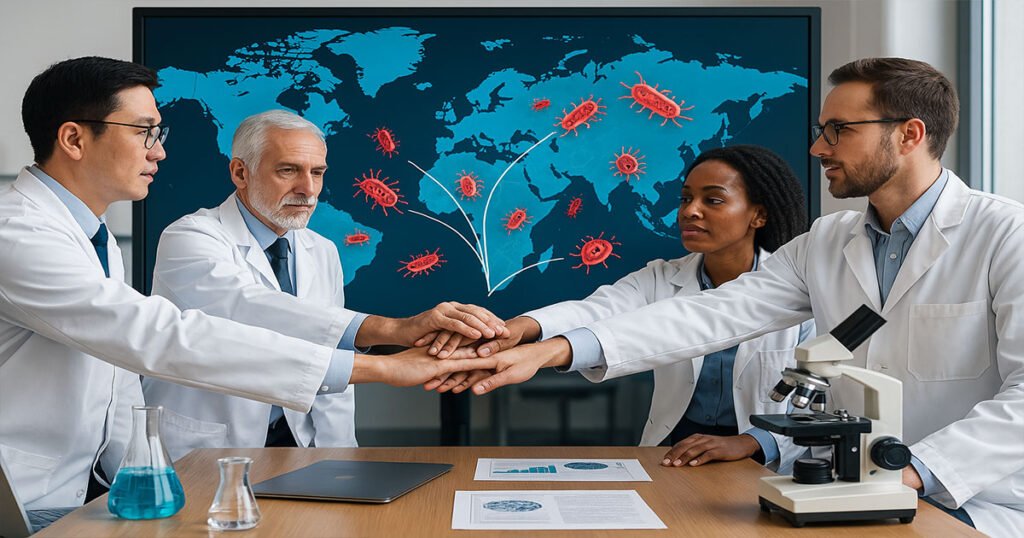
Such cross-border cooperation is the way to overcome the problem of antibiotic resistance. Members of superbug families have no respect for national boundaries; they spread by traveling, trade, and food distribution networks around the globe. What starts in one hospital might soon turn out to be a global issue.
This is why organized research is really necessary. Countries are to share the results, labs, patient data, and technological platforms. The door is being opened through such initiatives as the Global Antibiotic Research and Development Partnership (GARDP), which brings the worlds of government, academia, and industry together.
The collaboration becomes even easier with the help of AI. Data can be trained globally, across populations, and algorithms with a more representative and realistic drug discovery can be done. The story about Abaucin shows that the combination of the whole world can overcome even the most difficult health challenges.
AI as a unifying technology
AI can unite human beings. You have to think of it as a type of language; it is a universal language that can be used, so when researchers have problems that they need to work out within countries and various fields, it can be solved quickly and efficiently.
You can be in New Delhi, Nairobi, or New York, but AI tools will help scientists find pathogens, predict outbreaks, and test new compounds. It evens the playing field, and this means that labs with fewer resources and equipment can put something into big discoveries as well.
Artificial Intelligence was more than a tool in the case of Abaucin; it was the glue between the chemists, microbiologists, and the computer scientists. It enabled them to merge their knowledge into something that resulted in something revolutionary.
The sooner we accept the use of AI in global health, the quicker and more equally we can address issues such as antibiotic resistance. New drugs are not only the objective; they are a more communicative and collaborative scientific society.
How You Can Help Prevent Antibiotic Resistance
Hints to people
No one needs to be a scientist to fight superbugs. Every person can do something daily to prevent the spread of antibiotic resistance:
- Do not insist on antibiotics when you have virus infections, e.g, colds or the flu, because these do not help.
- Complete your prescriptions even though you begin to feel better. It is easier to stop early and allow the bacteria time to adjust so they can live.
- You must not treat yourself with these antibiotics that you have purchased or share your antibiotics.
- Practice hygiene, frequently wash hands, and adequately wash the wounds.
- Stay abreast of shot reports, and this will reduce the number of antibiotics to be used because the antibiotics will be needed to cure infections caused by injections.
On their own, these are relatively small things, but when they are multiplied by millions of other people, they have the potential to make such a difference. This will ensure the future of antibiotics as the smart, more sensible use of them will maintain their efficacy at the critical time when they are required.
What communities and hospitals can do
Antibiotic resistance is not a personal issue; it is a systematic one. Its control depends on the communities and healthcare institutions:
- Hospitals are expected to apply strict standards of hygiene and control the usage of antibiotics with the help of stewardship programs.
- Over-the-counter sales malpractice, that is, prescribed antibiotics without prescriptions, should be stopped in pharmacies.
- Vaccination and hygiene could be encouraged at school and in the workplace.
- Antibiotics should be used responsibly with education on the same during the public health campaigns.
The policymakers should also encourage study and create incentives to come up with new antibiotics. The entire effort is collective, and each needs their share of roles as they exist stratified in society.
The happy news? Superbug wars are not lost, as with coordinated efforts and innovations such as what Abaucin does, efforts are not only winnable but are already bearing fruit in our favor.
Key Takeaways
Benefit and consequences summary
- Artificial intelligence has transformed pharmaceutical research and development by making it possible to discover newer and more effective methods of creating antibiotics such as Abaucin.
- Abaucin is original and able to kill the superbug Acinetobacter baumannii, one of the threats that the WHO identified as a threat.
- The precision of the antibiotic is exceptional; it implies that the chance of promoting resistance is reduced since a single kind of bacteria is attacked.
- The finding demonstrates the opportunity of international cooperation, which means that researchers, data, and tools from different nations merge.
- Along with antibiotics, AI is the future of medicine across activities in cancer, neurology, and vaccine development.
The road ahead for AI-driven medicine
Although Abaucin will not be ready right now, it has already altered the perception of drug discovery. This achievement of AI-powered antibiotics paves the way for future innovations. What is more important is that it makes us confident that we can outsmart even the most adaptive pathogens.
From discovery to pharmacy, there is a long way, but it is clear. Now, all we require is further investment, sensitization, and dedication by each nation across the world to sustain the momentum.
Doctors and researchers are no longer the only people holding the future of medicine by the reins: it is now algorithm-enhanced, collaboration-sustained, and data-driven.
Conclusion
In 2025, the world witnessed a remarkable observation: that artificial intelligence has found an antibiotic in saving lives, where the kind of science used repeatedly failed. Abaucin is not a mere other medical innovation, but it is the emblem of the potential of what can be accomplished when technology and human creativity converge to address a problem in one of the most pressing health crises of the age.
Superbugs have threatened to turn back time to the pre-antibiotic days. But with A.I. in the bag, we are scripting a new one, where we are being strong, adaptive, and progressive. This finding is a milestone, not only in science but also in the future of mankind.
Respectively, being a healthcare worker, a policymaker, or a regular citizen, the message is the same: everyone can contribute to this battle. And, finally, through such breakthroughs as Abaucin, we are at last gaining a mighty new ally.
FAQs
What is a superbug?
- A superbug is a kind of strain of bacteria that has developed an immunity to various antibiotics, thus it is very difficult to treat. The hospitals are common places to find these infections, and such infections have caused numerous deaths globally.
How is the way AI find antibiotics?
- AI models are optimized with the data of familiar chemical constructions and their impacts on bacteria. After training, the AI will be able to search enormous databases looking to find new substances that have a high probability of becoming effective antibiotics.
What will be the release date of Abaucin?
- Abaucin is at the preclinical stage. As long as the clinical trials are performed, it may be in the open by 2030.
Will the superbugs be capable of becoming resistant to antibiotics designed by AI?
- The reply is Yes, but the risk is less when the antibiotics are narrow-spectrum the point as in Abaucin. Resistance must not be formed, and this can be done by using responsibly and conducting continued research.
How can I stop antibiotic resistance?
- Avoid unnecessary antibiotics, consume all recommended dosages of a prescription, exercise proper hygiene, be immunized, and play a role in enhancing the spread of public health in the aspect of responsible antibiotic usage.

